How Long Will the Dollar Remain the World’s Reserve Currency?
by Ron Paul
 We frequently hear the financial press refer to the U.S. dollar as the “world’s reserve currency,” implying that our dollar will always retain its value in an ever shifting world economy. But this is a dangerous and mistaken assumption.
We frequently hear the financial press refer to the U.S. dollar as the “world’s reserve currency,” implying that our dollar will always retain its value in an ever shifting world economy. But this is a dangerous and mistaken assumption.
Since August 15, 1971, when President Nixon closed the gold window and refused to pay out any of our remaining 280 million ounces of gold, the U.S. dollar has operated as a pure fiat currency. This means the dollar became an article of faith in the continued stability and might of the U.S. government.
In essence, we declared our insolvency in 1971. Everyone recognized some other monetary system had to be devised in order to bring stability to the markets.
Amazingly, a new system was devised which allowed the U.S. to operate the printing presses for the world reserve currency with no restraints placed on it– not even a pretense of gold convertibility! Realizing the world was embarking on something new and mind-boggling, elite money managers, with especially strong support from U.S. authorities, struck an agreement with OPEC in the 1970s to price oil in U.S. dollars exclusively for all worldwide transactions. This gave the dollar a special place among world currencies and in essence backed the dollar with oil.
In return, the U.S. promised to protect the various oil-rich kingdoms in the Persian Gulf against threat of invasion or domestic coup. This arrangement helped ignite radical Islamic movements among those who resented our influence in the region. The arrangement also gave the dollar artificial strength, with tremendous financial benefits for the United States. It allowed us to export our monetary inflation by buying oil and other goods at a great discount as the dollar flourished.
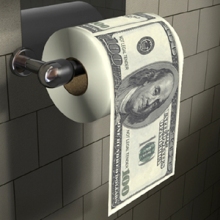 In 2003, however, Iran began pricing its oil exports in Euro for Asian and European buyers. The Iranian government also opened an oil bourse in 2008 on the island of Kish in the Persian Gulf for the express purpose of trading oil in Euro and other currencies. In 2009 Iran completely ceased any oil transactions in U.S. dollars. These actions by the second largest OPEC oil producer pose a direct threat to the continued status of our dollar as the world’s reserve currency, a threat which partially explains our ongoing hostility toward Tehran.
In 2003, however, Iran began pricing its oil exports in Euro for Asian and European buyers. The Iranian government also opened an oil bourse in 2008 on the island of Kish in the Persian Gulf for the express purpose of trading oil in Euro and other currencies. In 2009 Iran completely ceased any oil transactions in U.S. dollars. These actions by the second largest OPEC oil producer pose a direct threat to the continued status of our dollar as the world’s reserve currency, a threat which partially explains our ongoing hostility toward Tehran.
While the erosion of our petrodollar agreement with OPEC certainly threatens the dollar’s status in the Middle East, an even larger threat resides in the Far East. Our greatest benefactors for the last twenty years– Asian central banks– have lost their appetite for holding U.S. dollars. China, Japan, and Asia in general have been happy to hold U.S. debt instruments in recent decades, but they will not prop up our spending habits forever. Foreign central banks understand that American leaders do not have the discipline to maintain a stable currency.
If we act now to replace the fiat system with a stable dollar backed by precious metals or commodities, the dollar can regain its status as the safest store of value among all government currencies. If not, the rest of the world will abandon the dollar as the global reserve currency.
Both Congress and American consumers will then find borrowing a dramatically more expensive proposition. Remember, our entire consumption economy is based on the willingness of foreigners to hold U.S. debt. We face a reordering of the entire world economy if the federal government cannot print, borrow, and spend money at a rate that satisfies its endless appetite for deficit spending.
How The U.S. Dollar Will Be Replaced
After being immersed in the world of alternative economic analysis for several years, it sometimes becomes easy to forget that most people do not track forex markets, or debt to GDP ratio, or true unemployment, or hunch over IMF white-papers highlighting subsections which expose the trappings of the globalist ideology. Sometimes, you just assume the average person knows what the heck you are talking about. This is, of course, a mistake. However, it is a mistake that is borne from the inadequacy of our age and our culture, and is not necessarily a product of weak character, either of the analyst, or the casual reader.
The great frustration of being actively involved in the Liberty Movement is the fact that many people are rarely on the same page (or even the same book) during political and economic discussion. Where we see the nature of the false left/right paradigm, they see “free democracy”. Where we see a tidal wave of destructive debt, they see a “responsible government” printing and spending in order to protect our “best interests”. Where we see totalitarianism, they see “safety”. Where we see dollar devaluation, they see dollar strength and longevity. Ultimately, because the average unaware citizen is stricken by the disease of normalcy bias and living within the doldrums of a statistical fantasy world, they simply have no point of reference by which to grasp the truth when exposed to it. It’s like trying to explain the concept of ‘color’ to a man who has been blind since birth.
Americans in particular are prone to reactionary dismissal when exposed to facts that disrupt their misconceptions. Our culture has experienced a particularly prosperous age, not necessarily free from all trouble, but generally spared from widespread mass tragedy for a generous length of time. This tends to breed within societies an overt and unreasonable expectation of ease. It generates apathy, and lazines, a crushing blubberous slothful cynicism subservient to the establishment and the status quo. Even the most striking of truths struggle to penetrate this smoky force field of duplicitous funk.
In recent articles, I have outlined the very immediate dangers of several potential economic events that are likely to take place this year, including the exit of peripheral countries from the European Union, the conflict between austerity and socialist spending in France and Germany, the developing bilateral trade agreements between China and numerous other countries which cut out their reliance on the U.S. dollar, and the likelihood that the Federal Reserve will announce QE3 before the end of 2012. All of these elements are leading in one very particular direction: the end of the Greenback as the world reserve currency.
In response to these assertions I have received letters from some people (some of them indignant) questioning how it would be even remotely possible that the dollar could be replaced at all. The concept is so outside their narrow world view that many cannot fathom it.
To be sure, the question is a viable one. How could the dollar be unseated? That said, a few hours of light research would easily produce the answer, but this tends to be too much work for the fly-by-night financial skeptic. Sometimes, the job of the alternative analyst is to make the obvious even more obvious.
So, let’s begin…
The Dollar A Safe Haven?
This ongoing lunacy is based on multiple biases. For some, the dollar represents America, and a collapse of the currency would suggest a failure of the republic, and thus, a failure by them as individual Americans who live vicariously through the exploits of their government. By extension, it becomes “patriotic” to defend the dollar’s honor and deny any information that might suggest it is on a downward spiral.
Others see how the investment world clings to the dollar as a kind of panic room; a protected place where one’s saving will be insulated from crisis. However, just because a majority of day trading investors are gullible enough to overlook the Greenback’s pitfalls does not mean those dangerous weaknesses disappear.
There is only one factor that shields the dollar from implosion, and that is its position as the world reserve currency. Without this exalted status, the currency’s value vanishes. Backed by nothing but massive and unpayable debt, it sits frighteningly idle, like a time bomb, waiting for the moment of ignition.
The horrifying nature of the dollar is that it is only valuable so long as foreign investors believe that we will pay back the considerable debts that we (the American taxpayer at the behest of our criminally run Treasury) owe, and that we will not hyperinflate in the process. If they EVER begin to see their purchases of dollars and treasuries as a gamble instead of an investment, the façade falls away. Yet again this year Congress and the Executive Branch are “at odds” over the expansion of the debt ceiling, which has been raised to levels beyond the 100% of GDP mark:
http://www.nytimes.com/2012/05/17/us/politics/obama-presses-congress-to-act-on-his-priorities.html
Barack Obama has made claims that increases in the debt ceiling are “normal”, and that most presidents are prone to hiking the barrier every once in a while. Yet, back in 2006, when George W. Bush increased debt limits, Obama had this to say:
“The fact that we are here today to debate raising America’s debt limit is a sign of leadership failure. It is a sign that the U.S. Government can’t pay its own bills…Instead of reducing the deficit, as some people claimed, the fiscal policies of this administration and its allies in Congress will add more than $600 million in debt for each of the next five years…Increasing America’s debt weakens us domestically and internationally. Leadership means that ‘the buck stops here.’ Instead, Washington is shifting the burden of bad choices today onto the backs of our children and grandchildren. America has a debt problem and a failure of leadership. Americans deserve better.”
For once, Barack and I agree on something. Too bad the man changes his rhetoric whenever it’s to his advantage.
Today, Obama now asserts that raising the debt ceiling is not an opening for more government spending, but an allowance for the government to pay bills it has already accrued. This is disingenuous and hypocritical prattle. Obama is well aware as are many in Congress that as long as the Federal Government is able to raise the debt ceiling whenever it suits them, they can increase spending with wild abandon. It’s like handing someone a credit card with no maximum limit. For most men, the temptation would be irresistible. Therefore, one can predict with 100% certainty that U.S. spending will never truly be reduced, and that our national debt will mount in tandem until we self destruct.
How has this trend been able to continue for so long? Our private central bank has created the fiat machine by which all economic depravity is possible. Currently, the Federal Reserve is the number one holder of U.S. debt. The Federal Reserve creates its own capital. It prints its wealth from thin air. The dollar, thus, has become its own lynchpin. The secretive institution which has never been subject to a full audit is now monetizing endless debt mechanisms with paper promises. What value would any intelligent investor put on such a fraudulent economic system?
The epic dysfunction of the dollar is rooted in its reliance on perception rather than tangible wealth or strong fundamentals. It is, indeed, like any other fiat unit, with all the inevitable pitfalls built into its structure.
Ironically, the value of the Dollar Index is measured not by its intrinsic buying power, or its historical buying power, but its arbitrary buying power in comparison with other collapsing fiat currencies.
The argument I hear most often when pointing out the calamitous path of the dollar is that it is the go-to safe haven in response to the crisis in Europe. What the financially inept don’t seem to grasp is that the shifting of savings back and forth between the euro and the dollar is just as irrelevant to our currency’s survival as it is to Europe’s. BOTH currencies are in decline, and this is evident by the growing inflationary pressures on both sides of the Atlantic. Ask any consumer in Greece, Spain, France, or the UK how shelf prices have changed in the past four years, and they will say the exact same thing as any consumer in the U.S.; costs have gone way up. Therefore, it makes sense to compare the dollar’s value not to the euro, or to the Yen, but something more practical, like the dollar of the past….
In 1972, just as Nixon was removing the dollar from the last vestiges of the gold standard, a new car cost an average of $4500. A home cost around $40,000. A gallon of gas was .36 cents. A loaf of bread was .25 cents. A visit to the doctor’s office was $25. Wages were certainly lower, but they kept much better pace with the prices of the era. Today, the gap between wages and inflation is insurmountable. The average family is unable to keep up with the flashflood of rising prices.
According to the historic buying power of the dollar, the currency is a poor safe haven investment. With the advent of bailout efforts and debt monetization through quantitative easing, its devaluation has been expedited dramatically. The Fed has left the door open for what I believe will be a final destructive round of publicly announced QE, weakening the dollar to near death:
http://www.reuters.com/article/2012/05/16/us-usa-fed-idUSBRE84F12320120516
The question then arises; why do foreign countries continue to buy in on the greenback?
The Dollar Dump Has Already Begun
One of my favorite arguments by those defending the dollar is the assertion that no foreign country would dare to dump the currency because they are all too dependent on U.S. trade. To answer the question above, the reality is that foreign countries ARE already calmly and quietly dumping the dollar as a global trade instrument.
To those people who consistently claim that the dollar will never be dropped, my response is, it already has been dropped! China, in tandem with other BRIC nations, has been covertly removing the greenback as the primary trade unit through bilateral deals since 2010. First with Russia, and now with the whole of the ASEAN trading bloc and numerous other markets, including Japan. China in particular has been preparing for this eventuality since 2005, when they introduced the first Yuan denominated bonds. The bonds were considered a strange novelty back then, especially because China had so much surplus savings that it seemed outlandish for them to take on treasury debt. Today, the move makes a whole lot more sense. China and the BRIC nations today openly call for a worldwide shift away from the dollar:
http://news.xinhuanet.com/english2010/indepth/2011-08/06/c_131032986.htm
With the global proliferation of the Yuan, and the conversion of the Chinese economy away from dependence on exports (especially to the West) towards a more consumer based system, the Chinese have effectively decoupled from their reliance on U.S. markets. Would a collapse in the U.S. hurt China’s economy? Yes. Would they still survive? Oh yes. Far better than America would, at least…
In 2008, I warned of this development and was attacked on all sides by more mainstream economists and Keynesian proponents who stated that such a development was impossible. Today, it’s common knowledge that our primary creditors are “diversifying” away from the dollar, though MSM talking heads and those who parrot them still claim that this is not a threat to our economy.
To be clear, the true threat to the dollar’s supremacy is not only due to the constant printing by the private Federal Reserve (though that is a nightmare in the making), but the loss of faith in our currency as a whole. The Fed does not need to throw dollars from helicopters to annihilate our currency; all they have to do is create doubt in its viability.
The bottom line? A dollar collapse is not “theory” but undeniable fact in motion at this moment, driven by concrete actions on the part of the very nations that have until recently propped up our debt obligations. It is only a matter of time before the dollar diminishes and fades away. All signs point to a loss of reserve status in the near term.
What Will Replace The Dollar?
My next favorite argument in defense of the Greenback is the assertion that there is “no currency in a position to take the dollar’s place if it falls”. First of all, this is based on a very naïve assumption that the dollar will not fall unless there is another currency to replace it. I’m not sure who made that rule up, but the dollar is perfectly able to be flushed without a replacement in the wings. Economic collapse does not follow logical guidelines or the personal pet peeves of random man-child economists.
Though, to be fair, and to educate those unaware, there IS a replacement already conveniently ready to roll forward. The IMF has for a couple of years now openly called for the retirement of the dollar as the world reserve currency, to be supplanted by the elitist organization’s very own “Special Drawing Rights” (SDR’s):
http://www.guardian.co.uk/business/2011/feb/10/imf-boss-calls-for-world-currency
The SDR is a paper mechanism created in the early 1970’s to replace gold as the primary means of international trade between foreign governments. Today, it has morphed into a basket of currencies which is recognized by almost every country in the world and is in a prime position to take the dollar’s place in the event that it loses reserve status. This is not theory. This is cold hard reality. For those who claim that the SDR is not considered a “real currency”, they should probably warn the U.S. Post Office, which now uses conversion tables that denominate costs in SDR’s:
http://pe.usps.com/text/imm/immc3_007.htm
So, now that we know a replacement for the dollar is ready to go, the next obvious question would be:
Why would global elites destroy a useful monetary tool like the dollar? Why kill the goose that “lays the golden eggs”?
People who ask this question are simply unable to see outside the fiscal box they have been placed in. For global bankers, a paper currency is not important. It is expendable. Like a layer of snake skin; as the snake grows, it sheds the old and dawns the new.
At bottom, men who promote the philosophies of globalization greatly desire the exaltation of a global currency. The dollar, though a creation of a central bank, is still a semi-sovereign monetary unit. It is an element that is getting in the way of the application of the global currency dynamic. I find it rather convenient (at least for those who subscribe to globalism) that the dollar is now in the midst of a perfect storm of decline just as the IMF is ready to introduce its latest fiat concoction in the form of the SDR. I find the blind faith in the dollar’s lifespan to be rife with delusion. It is not a matter of opinion or desire, but a matter of fact that currencies in such tenuous positions fall, and are in the end replaced. I believe that the evidence shows that this is not random chance, but a deliberate process, leading towards the globalist ideal; total centralization of the world under an unaccountable governing body which operates a global monetary system utterly devoid of transparency and responsibility.
The dollar was a median step towards a newer and more corrupt ideal. Its time is nearly over. This is open, it is admitted, and it is being activated as you read this. The speed at which this disaster occurs is really dependent on the speed at which our government along with our central bank decides to expedite doubt. Doubt in a currency is a furious omen, costing not just investors, but an entire society. America is at the very edge of such a moment. The naysayers can scratch and bark all they like, but the financial life of a country serves no person’s emphatic hope. It burns like a fire. Left unwatched and unchecked, it grows uncontrollable and wild, until finally, there is nothing left to fuel its hunger, and it finally chokes in a haze of confusion and dread…
Soros Prophesies A Frightful Future For Some
The world’s financial elite recently met at the World Economic Forum in Davos, Switzerland with discussions on sustaining and replacing the capitalist system they operate. Over the past couple of weeks, George Soros, the IMF and the World Bank have all issued chilling warnings about the possibility of an impending economic collapse. Considering the power and the influence that Soros, the IMF and the World Bank all have over the global financial system, this is very alarming. George Soros said in Newsweek Magazine:
“I am not here to cheer you up. The situation is about as serious and difficult as I’ve experienced in my career,” Soros tells Newsweek. “We are facing an extremely difficult time, comparable in many ways to the 1930s, the Great Depression. We are facing now a general retrenchment in the developed world, which threatens to put us in a decade of more stagnation, or worse. The best-case scenario is a deflationary environment. The worst-case scenario is a collapse of the financial system.”
In the same article, Soros is quoted as saying that we could soon see the U.S. government using “strong-arm tactics” to crack down on rioting in the streets of major U.S. cities.
All you need to review is a stream of Executive Orders which gives the President of the United States dictatorial powers. Consider the possibility of “rumored FEMA Detention camps” along with Internet “Kill Switch” legislation, that will make it illegal to even write about what others perceive as a “conspiracy theory,” even though any such conspiracy may be true!
The article continues:
“As anger rises, riots on the streets of American cities are inevitable. ‘Yes, yes, yes,’ he says, almost gleefully. The response to the unrest could be more damaging than the violence itself. ‘It will be an excuse for cracking down and using strong-arm tactics to maintain law and order, which, carried to an extreme, could bring about a repressive political system, a society where individual liberty is much more constrained, which would be a break with the tradition of the United States.’”
Folks like George Soros are likely anticipating the same kind of a breakdown of society that many survivalists and preppers are getting ready for. If the system goes down, and food, water, medical and other supplies are interrupted, how will you survive? What preparations have you made? In addition, are you part of a community of like-minded individuals who will help you survive? The alternative is to do absolutely nothing and let others prepare your future. Should you plan? Should you pray? Should you fear? Who you trust is more important than ever.
Outrageous Debt from Betting on Derivatives
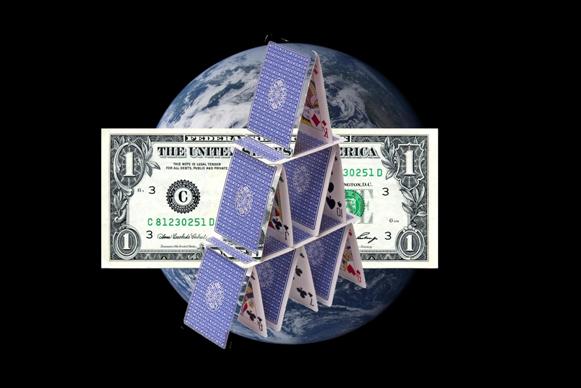 The Obama Administration must be very worried about JP Morgan. Why? JP Morgan has the largest derivative exposure of US banks to the tune of $70.1 trillion. The next four largest banks are also weighed down with derivatives that are worth little or nothing, bets and speculation games of the past. Citibank has $52.1 trillion in total derivatives. Bank of America has $50.1 trillion in derivative debt. Goldman Sachs has 44.2 trillion in derivative debt. HSBC USA has $4.3 trillion in derivatives. Combined, the five biggest commercial banks have $220.9 trillion in total derivative contracts. The real kicker is that the combined assets of those same top five banks is a mere $4.8 trillion, a leverage of 46 to 1. What could go wrong? In 2009 the Financial Accounting Standards Board changed how banks value assets like real estate and mortgage-backed securities to whatever an institution speculates they will fetch in the future.
The Obama Administration must be very worried about JP Morgan. Why? JP Morgan has the largest derivative exposure of US banks to the tune of $70.1 trillion. The next four largest banks are also weighed down with derivatives that are worth little or nothing, bets and speculation games of the past. Citibank has $52.1 trillion in total derivatives. Bank of America has $50.1 trillion in derivative debt. Goldman Sachs has 44.2 trillion in derivative debt. HSBC USA has $4.3 trillion in derivatives. Combined, the five biggest commercial banks have $220.9 trillion in total derivative contracts. The real kicker is that the combined assets of those same top five banks is a mere $4.8 trillion, a leverage of 46 to 1. What could go wrong? In 2009 the Financial Accounting Standards Board changed how banks value assets like real estate and mortgage-backed securities to whatever an institution speculates they will fetch in the future.
When combined with a European debt crisis, we have the beginnings of what could the next meltdown from the same junk assets and banker speculations. This is has made Wall Street a truly false economy if there ever was one. To learn more, you can read archived articles and viewpoints here and at Digital Economy.
Why the US Economy Stinks
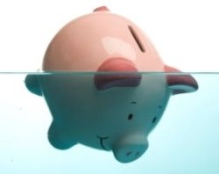 Five banks — JPMorgan, Bank of America, Citigroup Inc. , Wells Fargo & Co. , and Goldman Sachs Group Inc. together held $8.5 trillion in assets at the end of 2011, equal to 56 percent of the U.S. economy, compared with 43 percent in 2006, according to central bankers at the Federal Reserve.
Five banks — JPMorgan, Bank of America, Citigroup Inc. , Wells Fargo & Co. , and Goldman Sachs Group Inc. together held $8.5 trillion in assets at the end of 2011, equal to 56 percent of the U.S. economy, compared with 43 percent in 2006, according to central bankers at the Federal Reserve.
Occupy Wall Street will join scores of labor organizations observing May 1, traditionally recognized as International Workers’ Day. They plan marches from Union Square to Lower Manhattan and a “pop-up occupation” of Bryant Park on Sixth Avenue, across the street from Bank of America’s Corp.’s 55-story tower.
“We call upon people to refrain from shopping, walk out of class, take the day off of work and other creative forms of resistance disrupting the status quo,” organizers said in an April 26 e-mail.
Homeless Survival: A Personal Experience
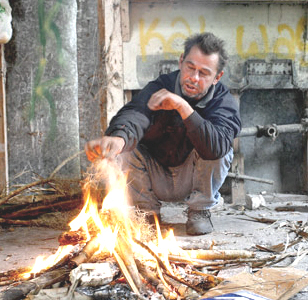 These days, “survivalism” has come to mean preparing for great events like nuclear holocaust or total government collapse. But disaster may come on a much more personal level. Individuals can suffer catastrophe as surely as nations can. When they do, it can be even more distressing because individuals feel alone in their suffering. I am talking about personal financial ruin and homelessness. Thousands of people across North America, indeed the world, have already experienced it following bankruptcies and foreclosures.
These days, “survivalism” has come to mean preparing for great events like nuclear holocaust or total government collapse. But disaster may come on a much more personal level. Individuals can suffer catastrophe as surely as nations can. When they do, it can be even more distressing because individuals feel alone in their suffering. I am talking about personal financial ruin and homelessness. Thousands of people across North America, indeed the world, have already experienced it following bankruptcies and foreclosures.
Whole families have been evicted from their homes, some quite forcibly. We see dozens of tent cities appearing across America, and more people ordering storage containers to live in. What we don’t see are the “hidden homeless” – those forced to survive by couch-surfing or moving back in with family. If 47 million Americans now live below the poverty line, that means 47 million who are either homeless or in imminent danger of becoming so. And the number is still growing.
When I lost my own job a while ago, I was not overly concerned. I had enough savings to live on for over a year. Then the economy self-destructed. It became exceedingly difficult to score a job interview, let alone an actual job. As the months of unemployment dragged on, my savings dwindled until I was forced for the very first time to consider homelessness as a real possibility. What would I do if worse came to worst? How would I live? Not being a “rugged” or “street-smart” person at all, I knew from the outset that I could not follow the prevailing wisdom of living as the homeless do and trying to blend in with them. Sleeping in bus shelters, eating from dumpsters, and staying in homeless shelters was not for me. I feel that joining the homeless population, as many recommend, severely limits your options, especially if you hold out any hope of ever rejoining society.
My only survival experience comes from camping and backpacking. I’ve survived for days or weeks with just the supplies on my back. So I tried to adapt that same knowledge to an urban environment, envisioning a new kind of “home-free” lifestyle. I prefer to call it “distributed living” or being an “urban nomad” because it lets you have most of life’s necessities, just not all in one place. It’s based on the backpacking model of carrying everything you need with you and being self-sufficient. It does require some resources and preparation. A plan like this must be undertaken before you actually become homeless, when you still have some money and credit to draw on.
Fortunately, homelessness is more easily anticipated than some other disasters. You often can see it coming months in advance. But even those who do may prefer to live in denial. You may think it cannot happen to you. But it has already happened to thousands who thought it could never happen to them either. Nobody plans to end up in a homeless encampment. But lately, this is where more and more of the former middle-class are landing. Even many famous celebrities have had periods of homelessness.
If you’re one of the lucky few who have nothing to worry about financially, remember that poverty is not the only cause of homelessness. Things like chemical spills, radiation leaks, brush fires, mudslides, arson, water main breaking, and civil unrest could all force you from your home as surely as mounting debt can. Natural disasters can strike anyone at any time. Hurricane Katrina rendered an entire city’s population homeless within hours. So have tornadoes in America’s heartland and nuclear meltdown in Japan. In such situations, people with vehicles and bug out bags ready will be survivors. Everyone else will be refugees. With that in mind, the following suggestions should be helpful to many, whether facing imminent homelessness or not. They can also be used in partial disaster scenarios where much of society still functions, with only some residents being displaced.
SHELTER
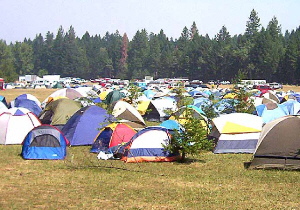 Obviously this is the main problem faced by the homeless. Those who stay in the city are restricted by laws against putting up any kind of temporary shelter. This is why the homeless are so often seen huddling in doorways, alcoves, tunnels, etc. Many cities have outlawed sleeping outdoors, which gives police the power to harass anyone they see lying down with their eyes closed. In fact, as long as you can be seen by anyone at night, your safety is at risk.
Obviously this is the main problem faced by the homeless. Those who stay in the city are restricted by laws against putting up any kind of temporary shelter. This is why the homeless are so often seen huddling in doorways, alcoves, tunnels, etc. Many cities have outlawed sleeping outdoors, which gives police the power to harass anyone they see lying down with their eyes closed. In fact, as long as you can be seen by anyone at night, your safety is at risk.
Homeless shelters may be no better. Filled with drugs and mental illness, they can be more dangerous than the streets, and many transients know enough to avoid them. Similar problems exist in tent cities. Diseases and parasites can easily spread when many people, all with poor hygiene, live close together.
Wooded areas appear safer and can be found throughout cities in the form of ravines, forests, valleys and parks. Some homeless build shelters there using tarps, plywood, cardboard boxes, or whatever else they can find. This may work for a while. But authorities keep tabs on these encampments and sooner or later come to take them down. Also, any shelter can be a target for thieves and squatters when you’re not there. Its mere presence during the day tells everyone that homeless person is living there.
I get around these problems by using a relatively inexpensive “pop-up “camouflage dome tent found online. A pop-up tent can be set up and taken down extremely fast, with very little effort. The idea is to find a secluded area in the woods or a local park, put up the tent at sunset, and then take it down again at or before sunrise the next morning. There is no campsite for anyone to find because it does not exist during the day. This is also known as stealth camping and many long-distance cyclists use it to avoid staying in motels. They camp on public or private land and take off before anyone knows they were there.
Your safety will come from being totally hidden. For anyone to see you sleeping at night, they would have to enter the forest after dark, leave the path at the right spot, and see through your camouflage. Even in broad daylight, a camo tent amid foliage is hard to spot. I have spent several nights in city parks using this method and haven’t yet been detected. A tent is one of the best possible temporary shelters you can use and gives a sense of security, even if it is mostly psychological. It does need a relatively flat, clear area of ground to be set up, so scout locations before you need them and clear them of debris before nightfall.
An even smaller shelter that fits practically anywhere is the bivy sack– essentially a zippered bag just large enough for your body, made of waterproof, breathable material. Some fold down to the size of a water bottle. A bivy will keep you dry and sheltered but won’t have room for anything else, like changing clothes. Some come with a framework that holds the fabric away from your face for some breathing room.
Satellite images on Google Maps are great for finding dense woods in your area. You want areas that are more “wild” and overgrown, not those which are obviously mowed and well maintained by the parks department(though if you are very diligent about always taking your tent down at sunrise, you should have no problems either way). Find spots which are totally hidden from both the trail and the street. At the same time, they should not be too far from places you want to go during the day. Eventually you will have memorized a few ideal spots around the city and can rotate between them so that you never camp in the same place too long. I use a heavy camouflage tarp as a groundsheet, protecting the tent floor from sharp debris. This can double as a cover for your gear, keeping it dry and hidden in the forest while you go about your daily business.
Do not try to weather a serious storm in a tent. At such times, train stations, bus stations and airports are better choices. They are open24 hours a day and are designed for people to wait in, with ample seating, bathrooms, snack bars, and sometimes wi-fi. In bad weather, some people will be sleeping in their seats or on the floor due to transit delays, and you can blend in with them. Keep a travel book from the library across your chest or some old boarding passes sticking out of your pocket. If you are in an airport with multiple terminals, change terminals every so often. Lingering in one place too long may attract the attention of security(though I have heard of one woman living for months at the airport before anyone caught on). Hospital waiting rooms may be almost as good.
CLOTHING
As an urban nomad, pick your outfit very carefully. It must not only protect you from the elements and carry what you need it to carry but also fit into an urban setting without looking odd. In my opinion, black should be the color of all your items, including bags. Black looks right at home in the city, can go longer between washings without looking dirty, makes your bags and pockets look smaller despite being packed with stuff, and will render you practically invisible at night. My all-black outfit consists of:
waterproof hiking shoes
paratrooper or cargo pants (lots of pockets)
alternate pair of waterproof pants
turtleneck
hoodie sweater
expedition vest filled with pockets
waterproof coat with hood
baseball cap with built-in LEDs (like the Panther Vision power cap, for hands-free lighting at night)
Add to this a week’s worth of clean socks and underwear, as well as duplicate pants and hoodie so you’ll still have something to wear when doing laundry. In cold weather, I add wool socks, thermal insoles, wool turtleneck, wool long underwear, waterproof mitts, and a balaclava.
BAGS
Huge packs made for backpacking may look odd in the city. I use a large size army surplus ALICE pack to carry bulky items such as sleeping bag and sleeping pad, with tent strapped to the outside. Choose a backpack that places the weight on your hips, not your shoulders, as the ALICE does. Urban commuter bags and messenger bags also work well for the city. You should be able to carry everything yourself when you need to. At other times, leave some of it stored or hidden and carry only what you need for that day. As backpackers know, the level of fitness required to carry everything you need on your back is not inconsiderable. So get in shape.
A compression sack may help fit everything in. Used by the army, this is a sack meant to be carried inside your pack. Fill it with compressible items (usually sleeping bag and clothes), then squeeze everything down, usually by sitting on it. At the same time, tighten all the straps around the sack. It will retain its smaller size until opened again.
HYGIENE
 Besides clothing, this is the other area that gives homeless people away. Though cities are filled with public bathrooms, it is hard to find one private enough to do anything more than use the toilet and wash your hands. So I recommend carrying a collapsible pail (found at camping stores) and a magnetic mirror (from a school supply store or dollar store). Collapsible pails fold down flat to take up very little space in your pack. Fill one with warm water from the sink and bring it into one of the stalls. Set the pail atop the toilet tank or hang it from something if possible. Stick your magnetic mirror to the stall wall and use the pail as your sink. Now you can shave, brush teeth, and scrub your armpits in relative privacy.
Besides clothing, this is the other area that gives homeless people away. Though cities are filled with public bathrooms, it is hard to find one private enough to do anything more than use the toilet and wash your hands. So I recommend carrying a collapsible pail (found at camping stores) and a magnetic mirror (from a school supply store or dollar store). Collapsible pails fold down flat to take up very little space in your pack. Fill one with warm water from the sink and bring it into one of the stalls. Set the pail atop the toilet tank or hang it from something if possible. Stick your magnetic mirror to the stall wall and use the pail as your sink. Now you can shave, brush teeth, and scrub your armpits in relative privacy.
Avoid bathrooms frequented by the homeless which tend to be the filthiest and most dangerous (eg. those in subways, public squares, certain restaurants, etc.). Clean, even elegant restrooms can be found in upscale shopping centers, colleges, theatres, airports, office buildings… places the homeless generally avoid. In hot weather, it may be possible to bathe in the same lakes and rivers where people go swimming.
When only a hot shower will do, visit a gym, YMCA, or university athletic center for the day, all of which have well appointed locker rooms. Fitness centers on college campuses may just be the cheapest, cleanest and safest, and are usually open to the public. A year’s membership will likely cost less than one month of rent, and may include perks like free wi-fi, towel service and a locker. It also provides a place to work out, rest, and socialize. Keeping suit clothes in your locker will allow you to go for job interviews. Beaches and campgrounds are other places to look for showers.
The travel section of dollar stores is a good place to pick up lightweight hygiene products like mini shampoo, mouthwash and toothpaste. Don’t forget plastic containers for your soap and toothbrush, and pill boxes to carry Aspirin, vitamins, and any medication you need. I keep all toiletries in a mesh bag which lets them air out after use. Replace your regular towel with a small, super absorbent one from a backpacking store. A battery-powered travel razor will let you shave just about anywhere, any time. Get one that runs on AA batteries as opposed to a plug-in rechargeable. Look for any way to save space, for instance using a bottle of camping soap also as dishwashing liquid and shampoo.
Facial cleansing cloths, wet naps, and hand sanitizer can keep you clean without water. If given any at a restaurant, save them until needed. Use those wet naps on your armpits and groin if necessary, where bacteria flourish. Use a high SPF sunscreen to avoid the telltale sunburn that many homeless people have. And if the look suits you, shave your head and forget about all the maintenance that comes with having hair.
Always practice good hygiene and grooming, not just for your own health but to keep blending in with civilized society. If you look and smell like a bum, you will find many doors closed to you.
FOOD
The homeless survivalist does not have the option of storing food long-term or buying in bulk. You can only stockpile what you can carry – which amounts to maybe a week’s worth of sustenance at most. Peanut butter is an excellent choice, being easy to carry and eat, high in calories and protein, and needing no refrigeration. Trail mix is another. There’s a lot of energy in nuts and seeds, and most of these mixes now come in resealable bags. Think like a backpacker, keeping heavy items like canned goods to a minimum and removing any unnecessary packaging from foods to make them lighter.
Dried (dehydrated) foods are the lightest. Foods that are simple, won’t spoil quickly, and require little to no cooking are well suited for the urban nomad: think beef jerky, granola bars, raisins and other dried fruits, corn chips, banana chips, buns, bagels, raisin bread, peanuts, instant soups, etc. Again, dollar stores are good places to procure these items cheaply. Because your diet is sure to drop in quality, take a multivitamin daily as well.
Carry your food in a reusable cloth shopping bag and you will simply look as though you’ve just been grocery shopping. Also keep a length of rope in this bag for hanging it from a tree when in the forest. Never keep food in your tent or your pockets at night, especially in city parks teeming with raccoons.
You should still have some means of cooking food. Needless to say, a big open fire in the woods would give away your presence. My personal choice was a Jet boil propane stove, with an Emberlit stove as backup. The Jet boil may be the fastest, most efficient means of boiling water outside, making it good for preparing instant foods and purifying water. The Emberlit stove is a wood stove. It folds flat, taking up almost no space in a pack, and its fuel is essentially free. It lets you cook with a very small fire well suited to stealth camping.
Look into the ultra-light, compact kitchen utensils that backpackers use. Such products are designed to fit inside each other and take up minimum space. I fit my two stoves, fuel canisters, two bowls, pot, mug, cutlery, can opener, and even a Steripen water purifier into a bag less than 9” wide by 11” tall.
Cities usually have places to fish. Take advantage of this free food source by carrying a compact fishing rod. The smallest rods fold down almost to the size of a pen. For tackle, all you really need are a couple of floats, some hooks, sinkers, and a lure or two, all of which will fit in the palm of your hand. Add a package of scented Power bait, or some similar product, to always have bait on hand. Look for live bait beneath fallen and rotting logs, or use pieces of food like bread or corn.
I’ve heard you can cook and eat practically anything that walks on land or flies. But be very careful with plants and eat only those you can positively identify as safe. (The color illustrations of plants in the pocket version of The SAS Survival Guide can help with this.)
WATER
This should be the least of your worries. Drinking water is readily found throughout cities. You should carry at least one 1L water bottle andget in the habit of topping it up every time you come to a tap or drinking fountain. Once you get used to water, you need never pay money for drinks again.
In the woods, large rivers are the preferred water source and you’ll want to camp near one if possible. A fast moving stream will be cleaner than a pool of standing water. Of course any water drawn from such a source must first be purified, just like in the wilderness. That means boiled, filtered, or treated with tablets or UV light. Water purification tablets (easily found at camping stores) are the easiest way to treat water without additional apparatus. River water should never be your first choice for drinking, but is good to have nearby when you run out of water collected from the city. Remember that almost all purification methods will remove the biological pathogens but not the chemical pollutants.
If rain is forecast, leave your collapsible pail outside to collect it. This water will not have to be purified.
INTERNET
Internet access is essential even when homeless. It is how you will look for jobs, send resumes, learn survival tips, and keep in contact with the wider world. You may even use it to earn money directly, using something like Amazon Mechanical Turk, or to offer your goods and services on EBay or Craigslist (the “gigs” section of Craigslist contains short-term odd jobs that pay cash). Under normal circumstances, this would hardly be enough to live on. But without rent or utilities to pay, the economics of a nomadic lifestyle are somewhat different.
Fortunately there are more and more places to use the Internet for free, especially if you can provide your own laptop, iPad or netbook. Find out all the freewi-fi zones in your vicinity. There will be some in places you never knew or expected. Large district libraries and reference libraries can be ideal. There you can find computers, cubicles, outlets to plug into, and some portable chairs to sit in all day. (Note: When using public wi-fi, always use a Virtual Private Network or VPN, like the free service Hotspot Shield, when entering passwords.)
The online environment looks the same whether you are homeless or not, and so can be a source of comfort and consistency as your living conditions change. When immersed in online activities, it almost doesn’t matter where you are. Even a homeless person can spend the day playing online games, watching shows, listening to music, writing a blog, and reading the news, much like a normal person would. If you have the need and the money, consider a rugged computer like the Panasonic Toughbook. Able to withstand drops and freezing temperatures, with a waterproof keyboard that glows in the dark, this laptop line is practically built for homelessness.
RADIO
You should have a radio, like any survivalist. The lightest might be something like an armband radio for joggers, with readout showing the time and an alarm. Use it to check weather reports daily, and choose your attire and shelter areas accordingly.
TELEPHONE
Cellphones make having your own phone number as an urban nomad very easy. Remember to charge it and your other wireless devices whenever you come across an available outlet.
If you need to receive mail, one choice is renting a PO Box. There are also services that can provide you with a real street address if you want people to think you have one. You will get an address like “99 Paladin Street #1” where the number actually refers to your box. This is useful when you have to give your home address to obtain services.
This is the essence of “distributed living” – your shelter in one area, your shower in another, your mailbox in yet another. All are components of your “home”, you just need to travel a bit to get to each one.
TRANSPORTATION
Your own two feet may serve as your primary mode of transport. For this reason, don’t skimp on your footwear and make sure it fits perfectly.
If you can still afford gas, auto repairs, parking and insurance, then by all means keep your vehicle as both transportation and shelter. If not, consider a bicycle as a substitute. Having a bike makes everything seem much closer than if you were walking, and will expand your range considerably. I already cycle everywhere and now prefer it to the often poor and overcrowded public transit system. Add a Bob Yak trailer, or almost any child bicycle trailer, and you can bring all your survival supplies with you. Some child trailers turn into strollers when detached from the bike. You can then push your belongings along the sidewalk in something a little more stylish than a shopping cart.
WINTER
Not everyone will have concerns about winter, depending on where they live. For me, the problem of surviving a Canadian winter without a heated shelter must be treated with deadly seriousness. Many homeless people die on the streets of cold countries every year. Throughout Europe, we have just seen how extreme cold can strike even in unlikely places and kill hundreds without warning. Without going into all the details of winter survival, here are some tips:
You must test out your cold weather gear before trusting your life to it. For example, camp out in the backyard during a deep freeze. Winterized sleeping bags have temperature ratings but their effectiveness varies depending on the user’s own body heat, metabolism, and clothing. Sit in the park for several hours in your full winter outfit to see if it’s enough. The amount of insulation needed for sitting still in the cold is greater than what people typically wear for dashing from one heated structure to another. Dress in layers and always cover your head, even when sleeping. Wool is arguably the best material as it insulates so well, even when wet.
A sleeping pad is just as essential as a sleeping bag. This item is easy to overlook, but without it you will get cold no matter how great your sleeping bag is. The ground has a way of conducting the heat right out of a warm body. (For the same reason, never sit directly on the ground without a thermal cushion like hunters use or some such insulating barrier.) The warmest sleeping pads are also the bulkiest and cannot be carried inconspicuously. I chose to focus on the smaller self-inflating pads and get the one with the highest ‘R-value (insulation rating) I could find. Without a sleeping pad, you will have to sleep on cardboard or newspapers just like the homeless do, or use pine boughs when in the wilderness.
From what I’ve seen, gadgets like electric sleeping bags and propane space heaters are not practical or effective. And building a fire is usually out of the question. So you will be relying on your own body heat for warmth. Don’t lose it by leaving your shelter at night. If you have to relieve yourself, use a bottle instead. Study the survival tactics of winter campers and arctic explorers. Anything that does not take well to freezing – laptops, cell phones, water bottles – should share the sleeping bag with you, down near your feet. Some winter sleeping bags have extra room at the bottom for this purpose. If you fill your water bottle with hot water before retiring, it will help warm you. Use extra layers of shelter if you have them. For example, using a bivy sack inside a tent may seem redundant but it will increase your bag’s effectiveness against the cold. So will using a tent inside a larger structure.
MORE READING
The U.S. Army Survival Handbook adequately covers the wilderness side of homeless survival. It takes into account the soldier’s need for stealth and concealment when stuck in enemy territory. Where other survival books tell how to remain visible and attract the attention of search parties, this one shows how to conceal your presence, move stealthily over terrain, and to build fires and shelters so that they cannot be spotted by the enemy. (For our purposes, “enemy” can refer to anyone – police, park rangers, security guards, neighborhood watch, etc. – who tend to make life extra difficult for the homeless.) This no-nonsense guide also has surprising and innovative ways to treat your own injuries and illnesses in the field using common materials.
CONCLUSION
Thanks to odd jobs, credit cards and help from relatives, I remain housed for now. But the threat of homelessness still looms large. My debts are such that I do not know exactly where I will be living three months from now. But even if homelessness never strikes, I won’t regret the time and money spent preparing for it. The increased confidence and peace of mind have been worth it. I know that, whether housed or not, life will go on. Even the idea of spending winter without a permanent shelter is no longer unthinkable, and that is an amazing thing. Preparing for homelessness has incidentally prepared me for other scenarios, like the furnace breaking down or a sudden evacuation. And I can go camping or backpacking at a moment’s notice.
Homelessness has to be one of the gloomiest things to think about, let alone prepare for. But realize that not thinking or preparing will make the reality of it worse. If you do find yourself out on the street, having a plan of where to go, what to do, and what to take with you can make all the difference. If it helps, don’t think of yourself as homeless but as a nomad practicing an alternative lifestyle. Without such an attitude or plan, you will start to resemble the typical bums who wander without direction or purpose. Who have nowhere to go, nothing to do, and nothing to hope for. Homelessness does not have to look like that. Develop the skills of the urban nomad and practice distributed living. Keep your basic needs met and your mind clear, and you can always live a dignified existence whatever your situation may be.
Brutality of the Roman Empire
by Simon Black
 In the terminal collapse of the Roman Empire, there was perhaps no greater burden to the average citizen than the extreme taxes they were forced to pay. The tax ‘reforms’ of Emperor Diocletian in the 3rd century were so rigid and unwavering that many people were driven to starvation and bankruptcy. The state went so far as to chase around widows and children to collect taxes owed.
In the terminal collapse of the Roman Empire, there was perhaps no greater burden to the average citizen than the extreme taxes they were forced to pay. The tax ‘reforms’ of Emperor Diocletian in the 3rd century were so rigid and unwavering that many people were driven to starvation and bankruptcy. The state went so far as to chase around widows and children to collect taxes owed.
By the 4th century, the Roman economy and tax structure were so dismal that many farmers abandoned their lands in order to receive public entitlements. At this point, the imperial government was spending the majority of the funds it collected on either the military or public entitlements. For a time, according to historian Joseph Tainter, “those who lived off the treasury were more numerous than those paying into it.”
Sound familiar?
In the 5th century, tax riots and all-out rebellion were commonplace in the countryside among the few farmers who remained. The Roman government routinely had to dispatch its legions to stamp out peasant tax revolts.
But this did not stop their taxes from rising.
Valentinian III, who remarked in 444 AD that new taxes on landowners and merchants would be catastrophic, still imposed an additional 4% sales tax… and further decreed that all transactions be conducted in the presence of a tax collector. Under such a debilitating regime, both rich and poor wished dearly that the barbarian hordes would deliver them from the burden of Roman taxation. Zosimus, a late 5th century writer, quipped that “as a result of this exaction of taxes, city and countryside were full of laments and complaints, and all… sought the help of the barbarians.”
Many Roman peasants even fought alongside their invaders, as was the case when Balkan miners defected to the Visigoths en masse in 378. Others simply vacated the Empire altogether.
In his book Decadent Societies, historian Robert Adams wrote, “[B]y the fifth century, men were ready to abandon civilization itself in order to escape the fearful load of taxes.”
Perhaps 1,000 years hence, future historians will be writing the same thing about us. It’s not so far-fetched.
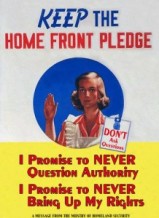 In the economic decline of any civilization, political elites routinely call on a very limited playbook: more debt, more regulation, more restriction on freedoms, more debasement of the currency, more taxation, and more insidious enforcement. Further, the propaganda machine goes into high gear, ensuring the peasant class is too deluded by patriotic fervor to notice they’re being plundered by the state.
In the economic decline of any civilization, political elites routinely call on a very limited playbook: more debt, more regulation, more restriction on freedoms, more debasement of the currency, more taxation, and more insidious enforcement. Further, the propaganda machine goes into high gear, ensuring the peasant class is too deluded by patriotic fervor to notice they’re being plundered by the state.
And just in case anyone falls out of line or starts thinking too much, they give a handful of people badges, weapons, and the authority to terrorize the population.
Whether direct taxation in the form of outright theft, or indirect taxation in the form of inflation, these tactics have been used for millennia to maintain privilege for an elite few at the expense of everyone else.
This time is not different.
At $780 billion, the US government’s budget deficit for just the first six months of FY2012 is more than the entire GDP of Indonesia. This is absurdly unsustainable, yet there is no end in sight to reckless spending habits… let alone paying back what’s owed.
Meanwhile, a whopping $5.5 -trillion- worth of US debt is maturing over the next three years. And it’s unlikely that foreigners will continue to generously loan their hard earned savings to Uncle Sam at sub-inflation rates.
 Further, given the millions of new entitlement recipients, it’s unlikely that intragovernmental agencies like Social Security will have the cash flow available to mop up any meaningful portion of this debt. That leaves the old tried and true options– direct confiscation from the people through debilitating taxes and capital controls, and indirect confiscation through painfully higher inflation.
Further, given the millions of new entitlement recipients, it’s unlikely that intragovernmental agencies like Social Security will have the cash flow available to mop up any meaningful portion of this debt. That leaves the old tried and true options– direct confiscation from the people through debilitating taxes and capital controls, and indirect confiscation through painfully higher inflation.
Like the 5th century Romans before us, people may be ready to abandon civilization itself to escape the burdens placed on them by today’s ruling class. Only, by the time this happens, it may be too late to start doing anything about it.
Every day it becomes harder to take actionable steps towards safeguarding freedom. It becomes harder to open a foreign bank account, to move and store gold abroad, to purchase firearms… even to travel abroad or renounce your citizenship.
U.S. Election: A Season for Political Spending
Most Americans know that when President Obama entered the power pole of presidency, he changed the law to allow unlimited spending for campaign contributions. One year ago, the Obama administration was contemplating an executive order that would require all corporations with a government contract to disclose political spending. The purpose was to make the federal contracting process more transparent. Since so many companies have a federal contract, the order was seen as an act of disclosure that required all corporations to reveal political spending over $10,000.
As is often true in politics, this initiative seems to be dead. The administration is unlikely to issue that order until after the 2012 elections at the earliest, and you know why. It’s been a grand pretense.
The larger question is what the White House is actually willing to do to create a better campaign finance system. If it’s not going to sign this executive order, the administration could try to force some nominees onto the Federal Elections Commission, as many good government groups have urged. Alternately, the White House could call for the Securities and Exchange Commission to issue rules requiring political spending disclosure, a move that one SEC commissioner has already voiced support for.
If Barack Obama is serious about campaign finance reform, he might take some of these executive actions. Alternately, he could just keep supporting bills he knows won’t pass, while raking in millions to his Super PAC for untold future promises.
How the U.S. Government is Spending Money
Obama Administration: Your Tax Dollars Spent on Overseas Mosques
US Facing An Unsustainable Crisis
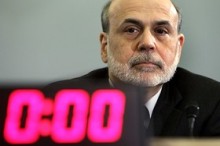 The strange French of “financial literacy” is once again being touted in Washington. “Although historical experience and economic theory do not indicate the exact threshold at which the perceived risks associated with the U.S. public debt would increase markedly, we can be sure that, without corrective action, our fiscal trajectory will move the nation ever closer to that point,” says Fed chairman Bernanke. Quite simply put, the United States federal government can’t continue operating as it has been over the last decade or more.
The strange French of “financial literacy” is once again being touted in Washington. “Although historical experience and economic theory do not indicate the exact threshold at which the perceived risks associated with the U.S. public debt would increase markedly, we can be sure that, without corrective action, our fiscal trajectory will move the nation ever closer to that point,” says Fed chairman Bernanke. Quite simply put, the United States federal government can’t continue operating as it has been over the last decade or more.
Bernanke says that an economic recovery is underway and that Washington risks undoing that. According to some, “bipartisan politics’ is part of the problem. Like most Americans, I’m hardly fooled by such talk. One of the largest problems in this nation is that politics in both parties has become more and more synonymous. The only difference is advertising and perception, a problem that some politicians feel must be changed this election. The real problem is that any change is just window dressing. The power behind the throne remains the same.
Spending, jobs and national production have only recently began to indicate the possibility of improvement. Those in financial circles are fearful of continued stability with record government spending. The politicians see staying the course as a kind of guarantee that the job market will continue to improve. Stable prices is the other goal as the nation faces hyperinflation from continued ‘quantitative easing,’ the vernacular that indicates printing more greenbacks. Why is Bernanke cautionary? He realizes that at some point the Federal Reserve cannot continue their present course and expect the financial rivets to stay the hull. The iceberg of uncontrollable inflation is staring him in the face. Even an overextended global currency can’t continue forever without credit restraint. Even Bernanke is smart enough to see the signs.
Government Credit is Everything & Nothing

In the nation that we affectionately call the United States, a situation exists where nearly 50 million people are dependent on food stamps and the numbers keep getting worse. The majority of the population is now reliant on the government for their day-to-day living expenses. There is a comparative handful of people who fritter away billion of dollars every year through the financial institutions they control while their annual “compensation” is an inconsiderable fraction of the losses they preside over. A global banking system, where fiat money created out of thin air through the fractional reserve, used to be to lent to individuals and businesses. That money credit is now being created to buy the debt of government.
The amount of that debt continues to increase everywhere, often with a shrinking tax base of older folks with falling birthrates. Everywhere, the idea of a government actually reducing, let alone paying off its debt. is considered irresponsible because of the “recession” which would be the inevitable outcome. US ratings agencies downgrade European sovereign debt on concerns that the nation in question ‘might not’ be able to pay off their debt while ignoring the fact that this same debt is the ONLY foundation available to the credit-based monetary system.
As the guardians of the insane system, the central banks boast about their indispensable role in maintaining monetary stability. To maintain this invaluable stability, they decree non-existent interest rates, create ever larger mountains of freshly printed money to keep companies, banks and governments solvent. They go to any length to prevent paper assets from being genuinely priced in any form. The marketplace is a fiction.
Recently, at a picturesque resort in Wyoming, Fed chairman Ben Bernanke met with his global counterparts. The financial world was attentively looking for indications of what these men are planning after having exhausted every monetary policy tool at their disposal. They continue to print dollars.
The never-ending credit expansion is obviously unsustainable. It’s painfully obvious, like the stoned dad that pilfers away the earnings of his family to buy more bad drugs. In the meantime, the mob supplies the credit for the kids to live on. The insanity must stop, but not because of any wisdom or bold “financial literacy.” One day, it simply will. Everything that real people have put their faith in simply won’t help them anymore.
Ron Paul Speaks About The Treason of Indefinite Detention
Every American citizen that doesn’t act or do exactly as the government dictates is now subject to indefinite detention per new law. What is coming down the pike? You can use your imagination.
The Truth About the New US National Detainee Policy
Confusion and debate continue about Obama’s approval of the abominable HR1540. This article isn’t about to change that, just as millions of non-custodial parents have lived for the last few decades under increasing tribulation under federal oppression through the Bradley Amendment. If you weren’t aware, you gave up key rights of privacy under this legislation even though you weren’t involved. HR1540 isn’t any different. If you aren’t aware of it, you’d better wake up. All that is needed is an incident, manufactured or otherwise. What is worse is the list of offenses listed below. Reading this article could offend the sensibilities of authority. While the author is somewhat critical of the intelligence of Americans, I say that most are too misdirected by the media or simply too busy. That needs to change. The pdf files are being stored on this website for your use and reference. In doubt? Read this article and think about it. ~ E.J. Manning
In the aftermath of the signing of the NDAA by the traitorous President Obama, some citizens remain completely hoodwinked by the language of the bill, running around the internet screaming that the law “does not apply to American citizens.”
This is, naturally, part of the side effect of having such a dumbed-down education system where people can’t even parse the English language anymore. If you read the bill and understand what it says, it clearly offers absolutely no protections of U.S. citizens. In fact, it affirms that Americans are subjected to indefinite detainment under “existing authorities.”
Let’s parse it intelligently, shall we?
First off, the offending section of the bill that used to be called 1031 was moved to 1021. Here is the title: HR1540
(http://www.gpo.gov/fdsys/pkg/BILLS-…)
SEC. 1021. AFFIRMATION OF AUTHORITY OF THE ARMED FORCES OF THE UNITED STATES TO DETAIN COVERED PERSONS PURSUANT TO THE AUTHORIZATION FOR USE OF MILITARY FORCE.
The two relevant sections to consider are titled and stated as follows;
(d) CONSTRUCTION. — Nothing in this section is intended to limit or expand the authority of the President or the scope of the Authorization for Use of Military Force.
By PARSING the language here, we must split it into two sentences based on the “or” operator. This statement essentially means:
• Nothing in this section is intended to LIMIT the authority of the President or the scope of the Authorization for Use of Military Force.
• Nothing in this section is intended to EXPAND the authority of the President or the scope of the Authorization for Use of Military Force.
In other words, this section places no limits whatsoever of the “authority of the President” to use military force (against American citizens). Keep that in mind as you read the next section:
(e) AUTHORITIES. — Nothing in this section shall be construed to affect existing law or authorities relating to the detention of United States citizens, lawful resident aliens of the United States, or any other persons who are captured or arrested in the United States.
This section “e” is the section that the hoodwinked people on the internet are running around saying “protects American citizens” from the NDAA. But where do they dream up such language? If you read section (e) again, you’ll discover it says nothing whatsoever about protecting American citizens from the NDAA. Instead, here’s what it really says when parsed into two sentences based on the “or” operator:
• Nothing in this section shall be construed to affect existing LAW relating to the detention of United States citizens, lawful resident aliens of the United States, or any other persons who are captured or arrested in the United States.
• Nothing in this section shall be construed to affect existing AUTHORITIES relating to the detention of United States citizens, lawful resident aliens of the United States, or any other persons who are captured or arrested in the United States.
In other words, section (e) only says that it does not alter “existing authorities” relating to the detention of US citizens.
So to answer the question about whether this affects U.S. citizens, you have to understand “existing authorities.”
What are those “existing authorities?”
Existing authorities already allow indefinite detainment and the killing of American citizens
As everyone who studies history well knows, the Patriot Act already establishes an “existing authority” that anyone suspected of being involved in terrorist-related activities can be arrested and detained without trial. If you don’t believe me, just Google it yourself. This is not a debated issue; it’s widely recognized.
Furthermore, President Obama already insists that he has the authority to kill American citizens merely by decree! As Reuters reported on October 5, 2011, a “secret panel” of government officials (who report to the President) can decide to place an American citizen on a “kill list” and then murder that person, without trial, without due process, and without even being arrested. (http://www.reuters.com/article/2011...)
Importantly, as Reuters reports, “Two principal legal theories were advanced [in support of the kill list authority] — first, that the actions were permitted by Congress when it authorized the use of military forces against militants in the wake of the attacks of September 11, 2001.”
Are you getting this yet? So the authority ALREADY exists for the President to order the killing of an American citizen. All that is required is that they be suspected of being involved in terrorism in any way, and not a shred of evidence is required by the government to support that. There is no trial, no arraignment, no evidence and not even a hearing. You are simply accused and then disappeared.
Thus, the authority already exists, you see, and the NDAA openly states that “Nothing in this section shall be construed to affect existing AUTHORITIES…”
In other words, the NDAA does nothing to protect American citizens, and it piggy-backs on the Patriot Act as well as Obama’s executive “kill list” justifications to essentially place all Americans in the crosshairs of government murderers or military action.
Rep. Justin Amash, a Congressman from Michigan, explains:
The key to subsection 1021(e) is its claim that sec. 1021 does not “affect existing law or authorities” relating to the detention of persons arrested on U.S. soil. If the President’s expansive view of his own power were in statute, that statement would be true. Instead, the section codifies the President’s view as if it had always existed, authorizing detention of “persons” regardless of citizenship or where they are arrested. It then disingenuously says the bill doesn’t change that view. (http://www.facebook.com/note.php?no…)
Follow more from Rep. Justin Amash at Facebook:
https://www.facebook.com/repjustinamash
Storing food could get you labeled as a terror suspect
So then, you might be wondering, “What kinds of activities could get me accused of being involved in supporting terrorism?”
And here’s the kicker, because all the following activities could cause you to be arrested, detained, interrogated and even murdered all under U.S. law, thanks to Obama:
• Criticizing the federal government.
• Using cash to purchase things.
• Storing food and medical supplies.
• Owning a firearm and storing ammunition.
• Standing still and minding your own business near a government building.
• Writing something down on a piece of paper near a government building.
• Using a pair of binoculars.
• Protesting for animal rights in front of a medical lab.
• Protesting your government (or Wall Street).
• Requesting to take more than a couple thousand dollars out of your bank account in cash.
You see, under existing authority, you could be labeled a “terror suspect” for engaging in any of these activities, and then LEGALLY arrested, detained, interrogated or even killed by the U.S. government, all under Obama’s authority (or whatever next President takes over in Washington and perhaps does far worse things with that power…)
You are already enemy combatants, folks. The NDAA does absolutely nothing to protect you from its provisions. In fact, it openly states that it does not limit existing authorities — authorities which already claim the right to subject you to indefinite military detention merely for being “suspected” of involvement with “terrorism,” which could be interpreted to apply in practically any situation.
Reading between the lines
Get this through your heads, folks: to properly understand the NDAA (or any other bill), you have to learn to think like lawyers and tyrants.
They don’t just put language right out in plain view that says, “Americans may never be arrested or detained without due process.” Instead, they create a web of legalese statements that are cross-referenced, paraphrased and specifically engineered to obfuscate their intended purpose. This is designed to hide their true intentions, not to make them clear.
Furthermore, if the bill actually intended to protect Americans from the NDAA, then it should have contained language saying something like, “American citizens are specifically excluded from all the provisions of this bill, in its entirety.”
I’ll bet anyone a thousand dollars they won’t find language like that in the bill. Because it doesn’t exist! And the reason it doesn’t exist is because the NDAA is clearly intended to apply to American citizens.
The writers of the bill have managed to fool a lot of everyday people who seem unable to parse language and read plain English with any depth of understanding. That is as much a failure of America’s public education system as anything else. I find it astonishing that today’s citizens can’t even read and understand the grammatical structure of sentences written in plain English. This alone is a highly disturbing subject that must be addressed another day. For now, it’s enough just to realize that the NDAA really does apply to you, me, and all our neighbors and friends. In signing it, Obama has cemented his place in history as the enabler of government-sponsored mass murder of its own citizens.
History does repeat itself after all, huh? Hitler, Stalin, Mao and now “Obama the enabler.” While Obama himself probably won’t engage in the mass murder of American citizens, have no illusions that a future President will try to use the powers enacted by Obama to carry out such crimes. Gingrich, anyone?





